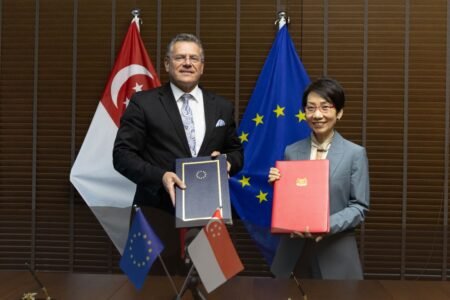According to a European Commission report published today on the current status of EU industry, most sectors have still not regained their pre-crisis level of output and significant differences exist between sectors and Member States. The “EU industrial structure report 2013: Competing in Global Value Chains” sheds more light on the downward trend in manufacturing. Also highlighted are the mutually beneficial links between manufacturing and services as well as the importance of global value chains. The report ultimately underlines the growing need to mainstream industrial competitiveness into other policy fields. These issues, recently highlighted by the Commission’s Communication on a European Industrial Renaissance, will be directly addressed at the forthcoming Competitiveness Council meeting on 20-21 February.
Advertisement
The main findings of the report included:
As supported by other studies, the report showed that the fragile recovery hinted at by positive growth in 2010-2011 was interrupted by a downturn in the business cycle and EU industries experienced a double dip. It also confirmed that since 2001 manufacturing sectors, as a proportion of economic output, declined further by 3 percentage points, to around 15% of GDP in 2012.
Country differences: Overall EU manufacturing output masks significant differences between Member States. Strong recoveries can be seen in Romania, Poland, Slovakia and the Baltic States, for example, which all regained and exceeded their pre-recession peaks.
Sector differences – high tech, pharmaceuticals and staples resist crisis: There are also significant differences between sectors. Construction, manufacturing and mining industries were badly hit. Industries producing consumer staples such as food and beverages, and pharmaceuticals, fared relatively better. High-technology manufacturing industries were not impacted to the same extent as other industries.
Productivity gains vary, and are concentrated in high tech industries: Productivity and employment gains varied significantly across sectors, with a general decline in manufacturing, in particular in low-tech industries. In the aftermath of the latest crisis, EU manufacturing managed to reduce labour costs and increase productivity, with high-tech industries as the main engine of growth being more resilient to the negative effect of the financial crisis thanks to both higher productivity and limited dependence on energy.
Services growing faster than manufacturing: On average between 2000 and 2012, market services (those typically provided by the private sector) grew by 1.7 percentage points in the EU, and now make up half of EU GDP. The share of non-market services (typically provided by the public sector) also increased, reaching 23% of GDP in 2012. From 2001-2010, employment grew in the service industries, whereas it declined in manufacturing.
Links between manufacturing and services are mutually beneficial: Manufacturing firms are increasingly using services as part of their business processes; in the development and sale of products, and for horizontal business activities such as accounting and logistics. Higher productivity growth in manufacturing can spill over to other sectors. The increased interdependence between manufacturing and services implies a ‘carrier function’ of manufacturing for services that might otherwise have limited tradability. This has a stimulus effect on innovation and qualitative upgrading for service activities.
Global value chains are increasingly important for EU industry: The EU is still the largest player in world trade, both in terms of goods and services and investment flows. Globalisation has transformed firms’ ‘value chains’ through the creation of an increasing number of established cross-border networks. While EU enterprises are already involved in global value chains, strengthening their participation will increase their competitiveness and ensure access to global markets in more favourable competitive conditions.
Foreign investment needed by manufacturing was badly hit: Increasing global trade flows have been accompanied by even stronger growth in global capital flows, including foreign direct investment (FDI) needed by EU industry. EU Member States together account for a significant proportion of global FDI flows (around 22 % of inflows and 30 % of outflows), but both inflows and outflows have been badly hit by the crisis. In 2010, EU FDI inflows were approximately a third of their 2007 level and outflows had fallen even further. Most of the fall in EU FDI inflows was due to a sharp drop in intra-EU flows since the start of the crisis.
EU Industrial Structure Report 2013: Competing in Global Value Chains







